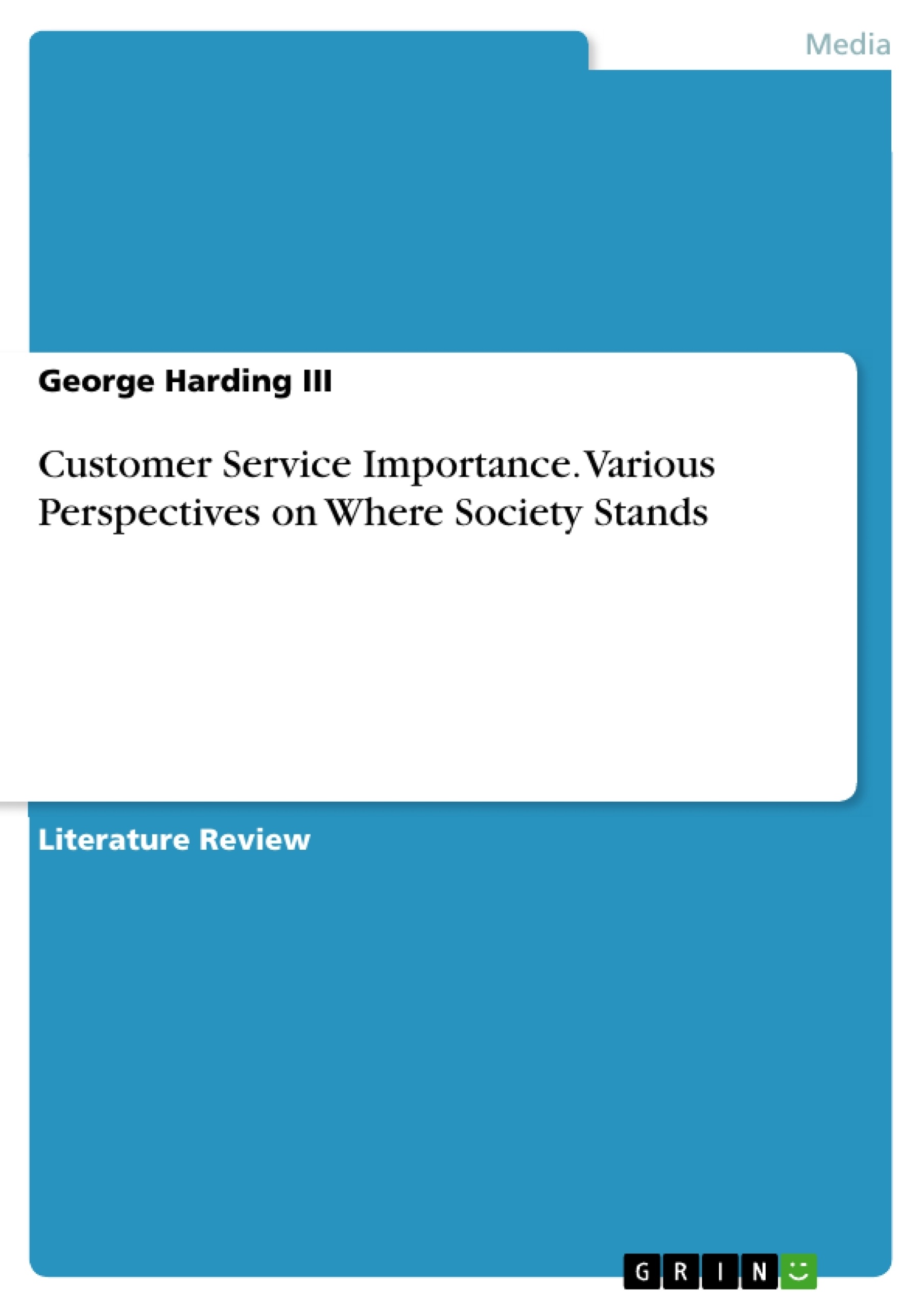This Literature Review pertains to the different outlooks of what customer service, the standards of customer service per industry, and the rewards of providing excellent customer service for the individual, the organization’s culture, and the customer being impacted as well.
Inhaltsverzeichnis (Table of Contents)
- Review of Literature
- Historical Background and Related State-of-the-Art Concepts
- Customer Service Standards per Industry
- Rewards of Providing Excellent Customer Service
Zielsetzung und Themenschwerpunkte (Objectives and Key Themes)
This literature review explores the concept of customer service, its evolving standards across different industries, and the various rewards associated with providing excellent customer service. It examines the importance of customer service in shaping a company's image and customer perception, both positively and negatively.
- The definition and importance of customer service
- The various perceptions of customer service across different levels of experience and expertise
- The development and implementation of customer service standards within organizations
- The impact of customer service on both customer satisfaction and organizational success
- The rewards associated with providing exceptional customer service, both for individuals and organizations
Zusammenfassung der Kapitel (Chapter Summaries)
The first chapter defines customer service and discusses the importance of treating customers as valued individuals rather than just a means to an end. It stresses the importance of establishing trust and building relationships with customers, highlighting key aspects of successful customer service as outlined by Susan Ward.
The second chapter focuses on customer service standards across various industries. It examines how organizations set and measure their service standards, using examples from the retail, wholesaling, airline, trucking, and restaurant industries. The chapter emphasizes the need for companies to understand customer expectations and develop strategies for meeting those expectations.
The third chapter explores the rewards of providing excellent customer service. It examines the impact of customer satisfaction on organizational success and highlights the importance of employee motivation and training in ensuring customer loyalty. The chapter discusses the use of customer satisfaction measurement services and outlines key factors for successful customer service implementation.
Schlüsselwörter (Keywords)
Key concepts explored in this review include customer service, customer satisfaction, organizational success, customer expectations, customer service standards, industry trends, employee motivation, and customer loyalty.
- Arbeit zitieren
- George Harding III (Autor:in), 2010, Customer Service Importance. Various Perspectives on Where Society Stands, München, GRIN Verlag, https://www.grin.com/document/180547



